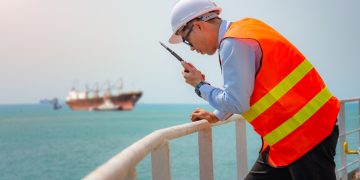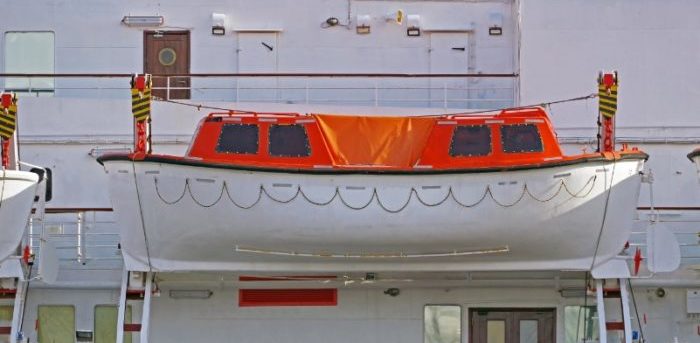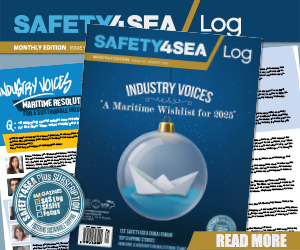One of the worst situations a seafarer can encounter during his/her sea service is the order by the master to abandon vessel in the face of danger. If not properly conducted, this operation, instead of saving lives, may lead to unexpected losses. In this regard, regular abandon-ship drills, which their frequency is prescribed by the SOLAS Convention, are vital to prepare crew onboard to safely manage an “abandon ship” operation.
Stages of abandon ship drills
An effective abandon ship drill is parted by four stages:
- Notification and Mustering
- Lowering the abandon ship means into water
- Embarking
- Debriefing
The fourth stage, Debriefing, is only applicable for drills. A real-life incident is completed in stage 3 after lifeboat’s/raft’s departure from vessel’s side. An extended risk assessment should be conducted prior operation commencement in order to identify and mitigate possible risks.
[smlsubform prepend=”GET THE SAFETY4SEA IN YOUR INBOX!” showname=false emailtxt=”” emailholder=”Enter your email address” showsubmit=true submittxt=”Submit” jsthanks=false thankyou=”Thank you for subscribing to our mailing list”]
Stage #1: Notification & Mustering
- The vessel’s general announcement system is to be used for crew/passengers’ notification.
- Apart of distress signal, clear instruction should be given for the mustering position and the means that are going to be used.
- Mustering in the assigned station should be completed quickly under calm conditions without shouting and panic.
- Each crewmember/passenger should proceed to the assigned station having put the personal life jacket on and having in hand the immersion suit. Immersion suits must only be used upon the Master’s order. If these are to be used in a later stage, then they should be stored in the life boat.
- The safety officer is responsible to count and report the final number to Master prior abandoning.
Stage #2: Lowering the boat/raft into the water
In case of free-fall boat (FFB), or on load release side boat, this stage follows the embarkation stage.
In conditions of calm sea and time availability, the abandon ship mean (boat or raft) should be lowered into sea water and an embarkation pilot ladder is to be used.
In this case, only the crew assigned/trained and authorized to operate the lifeboat will be embarked and lowered with the boat.
The engine should be tested and put to continuous work (when waterborne).
Stage #3: Embarkation
As soon as the side boat and the normal lowering procedure is in place, then the boat should be lowered into water -only with the assigned crew onboard- using davits or cranes.
The control of brake is under safety officer’s supervision and the whole operation is subject to the Master’s approval. The rest of the crew will embark using a side pilot ladder and Master will be the last one to embark.
In case of on load release, the embarkation is conducted as soon as the boat is to the appropriate side position. The final release is again subject to the Master’s approval.
In case of FFB, the crew should proceed to assigned seats and fasten the seat belts.
Safety officer is responsible to check the appropriate fastening of the crew and report to Master. All hatches must be secured and the engine to be ready for use. The final release order is given by Master.
During drills, the embarkation in both side boats and FFB should be real, in securing position with all available securing equipment in place. In drills, do not attempt to embark all crew in the boat without ensuring that it is properly secured in storage position.
Pre-requirements for abandoning the ship
The following are pre-required in order to execute the abandoning of vessel:
- Trained crew (certified and well-trained through drills and briefings)
- Appropriate and operational means (Boats/rafts, cranes, davits, pilot ladders)
- Appropriate provisions stored in boats
- Maintained and tested lifeboat engines
- Communication equipment in place
- Navigation equipment
- Distress signal/message submitted to coastal stations and nearby vessels
Stage #4: Debriefing
After completing the drill, the safety officer should debrief the crew referring to all stages of execution. Special care should be made to the appropriate use of personal equipment and the procedure of lowering and deploying abandon ship means (boats or rafts). All used material or equipment should be returned to the appropriate position/condition as before the drill. Brief questions may be used to check crew’s knowledge or lessons learned from the drill.
SQE has developed a sample of toolbox meeting in order to be used as guidance on board.








































































Refer Skuld’s publication “Shipboard Drills” #2 Lifeboat Drills